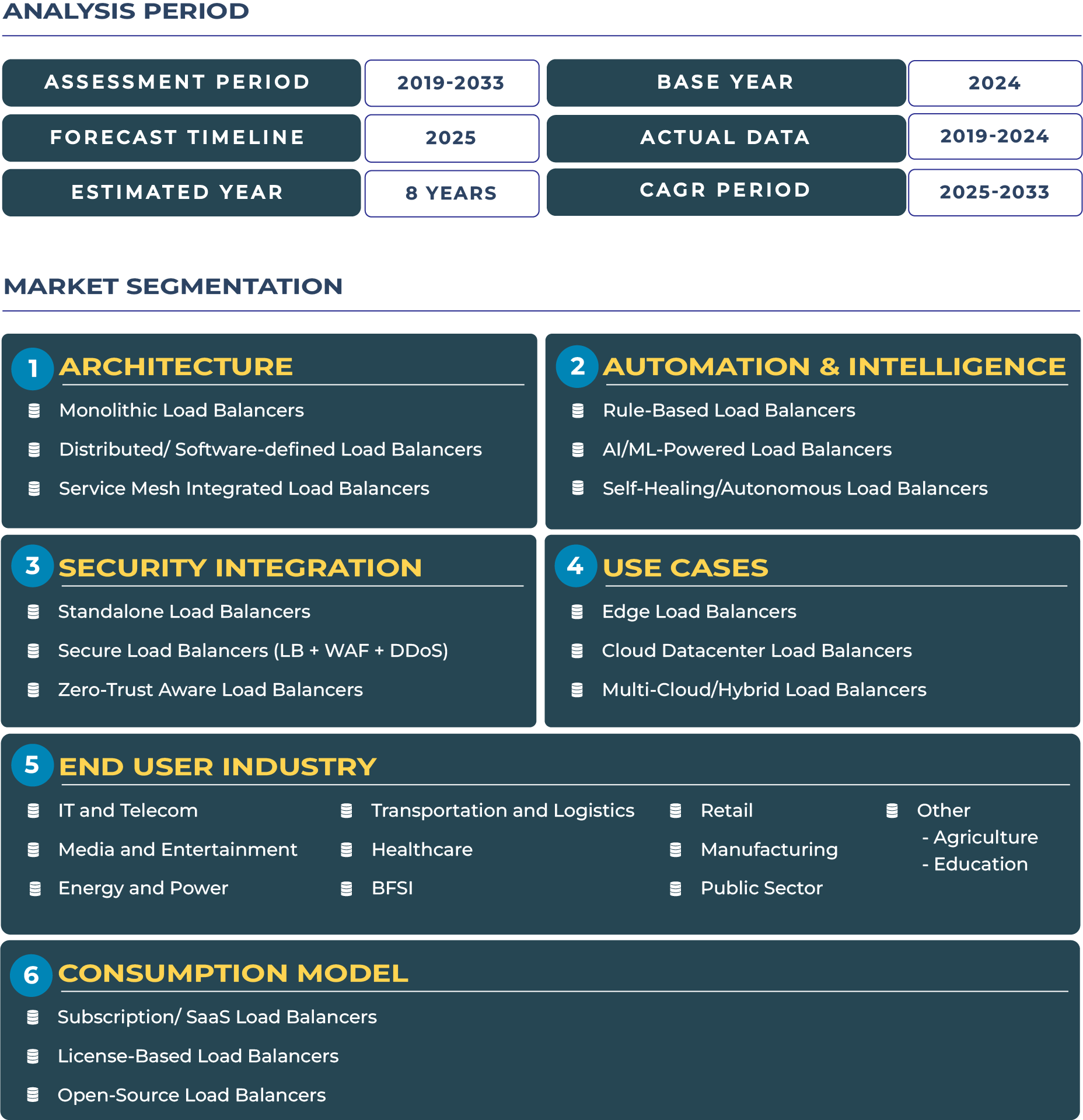New Zealand’s Agile SME-Led Cloud Adoption Shaping Cloud Load Balancers Market
New Zealand is positioning itself as an SME-driven agile cloud adopter, balancing rapid innovation with scalable digital infrastructure. The nation’s focus on small and medium enterprise digitization, coupled with cloud-first public sector strategies, has created fertile ground for advanced load balancing solutions. The New Zealand cloud load balancers market is projected to expand from USD 32.1 million in 2025 to USD 144.6 million by 2033, at a robust CAGR of 20.7%. This growth reflects the convergence of SME innovation, resilient public-sector digitalization, and a regulatory framework that prioritizes agility, sovereignty, and secure workload distribution across monolithic and distributed architectures.
Strong SME Ecosystem and Public-Sector Cloud-First Mandates Fuel Market Growth
New Zealand’s cloud load balancers industry benefits from a tightly integrated enterprise ecosystem where SMEs form the backbone of the economy. Their accelerated adoption of cloud-native applications creates a strong demand for load balancers that ensure seamless scalability, uptime, and performance. Public-sector commitments to cloud-first policies, driven by agencies such as the Department of Internal Affairs, are further supporting adoption across government services. Load balancers are becoming mission-critical in enabling always-on public platforms, from healthcare to education. Combined with the country’s stable legal and regulatory framework, these drivers are ensuring consistent investments into both distributed and service mesh integrated load balancer architectures.
Limited Hyperscaler Regions and Talent Constraints Restrict Market Momentum
Despite encouraging fundamentals, the cloud load balancers market in New Zealand faces limitations due to its relatively small size and constrained hyperscaler footprint. With fewer global cloud regions than larger Asia-Pacific peers, enterprises face latency risks and limited choice of architectures, often requiring creative use of distributed and service mesh solutions to mitigate performance gaps. The scarcity of advanced cloud-native talent, especially DevOps and network security specialists, presents another bottleneck, slowing down deployments and elevating operational costs. These restraints underscore the importance of localized managed services and training initiatives to sustain momentum in New Zealand’s evolving cloud load balancers sector.
Managed Services, Regional Connectivity, and Government Cloud Adoption Define Market Trends
New Zealand cloud load balancers ecosystem is being shaped by significant trends across sectors and geographies. The government’s increasing reliance on cloud infrastructure for public services has positioned load balancers as core to digital resilience strategies. Managed service providers (MSPs) are also finding opportunities to cater to SMEs that prefer outsourced expertise to manage distributed and monolithic load balancers. At the same time, regional connectivity improvements, particularly investments in trans-Tasman and Pacific fiber links, are reducing latency and enabling enterprises in Auckland, Wellington, and Christchurch to deploy advanced applications more confidently. These trends underline the role of agility in defining New Zealand’s digital future.
Opportunities in Public-Sector Solutions, SME-Centric Services, and Edge Deployments
The cloud load balancers sector in New Zealand is brimming with opportunities that align with national priorities. Public-sector adoption of load balancers offers vendors stable revenue streams and visibility, particularly as digital government initiatives expand. MSP-managed load balancer offerings are creating new service delivery models tailored for SMEs seeking cost-effective resilience. Moreover, niche edge deployments in areas like smart agriculture and regional logistics present specialized use cases where low-latency distributed load balancers become critical. This evolving opportunity landscape points to a diversified pathway for market participants, particularly those able to combine sovereign-ready compliance with flexible service delivery models.
Competitive Landscape: Partnerships, Sovereign Strategies, and MSP Alliances
The competitive landscape of the New Zealand cloud load balancers industry features both global hyperscalers and local technology players. International providers such as Google Cloud and Microsoft Azure are strengthening their presence through regional partnerships, while domestic MSPs are leveraging these alliances to deliver sovereign-compliant solutions. In 2024, new initiatives centered on public-sector workloads underscored the importance of sovereign cloud offerings, where load balancing plays a pivotal role in workload resilience and regulatory compliance. Vendors are also investing in alliances with SMEs and government agencies, reflecting the central role of managed services and sovereign solutions in shaping the next wave of growth across the cloud load balancers landscape.







